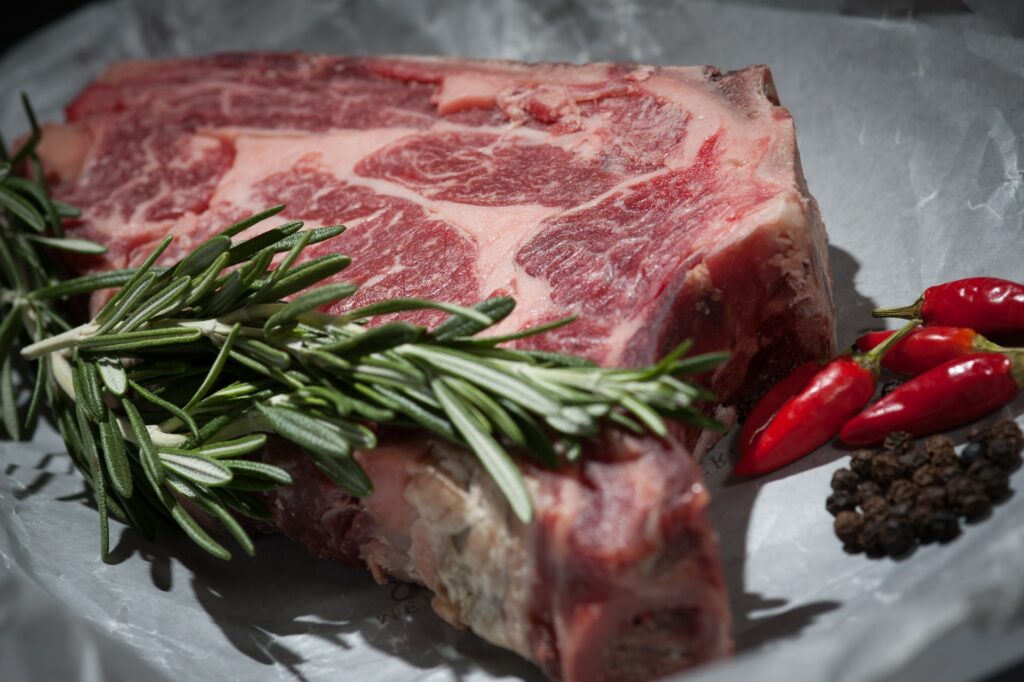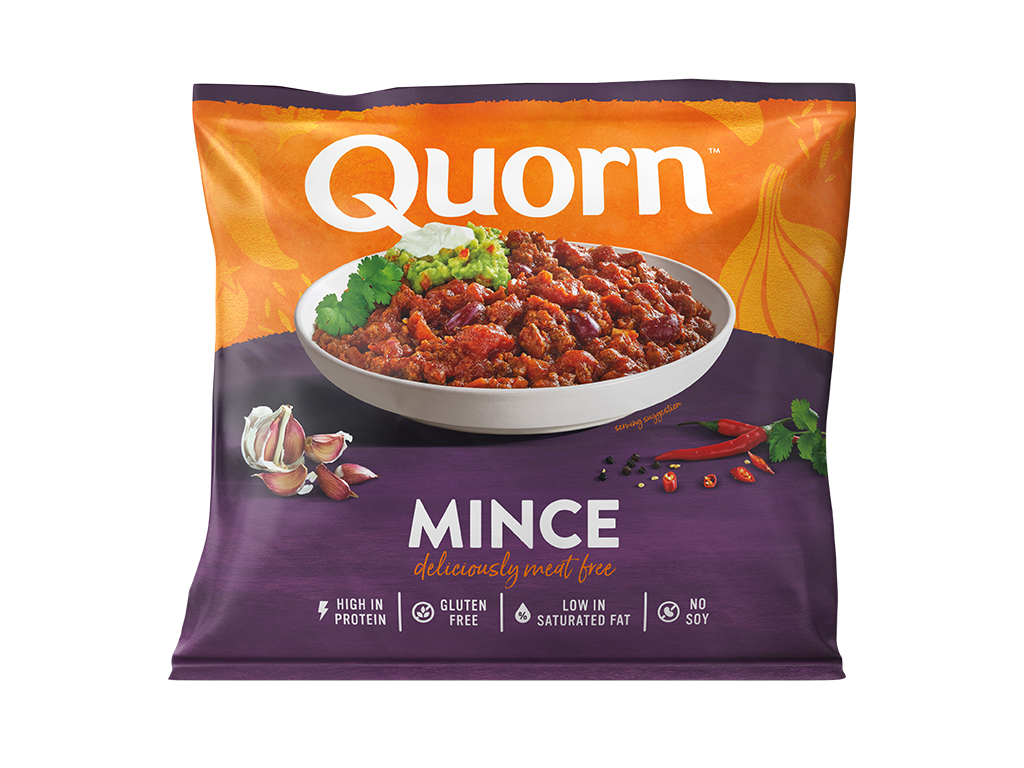In moderation, beef offers valuable sources of protein and nutrients among other health benefits, but it is being consumed at levels that are in collision with both human and environmental health. To offset the growing demand for beef there must be alternatives that provide matched benefits in nutrition, organoleptic properties, consumer acceptance and environmental sustainability (Rubio, Xiang, & Kaplan, 2020).

A plethora of options for swapping out beef exist, including mycoprotein, the main ingredient in Quorn. This non-sentient ‘meat analogue’ exhibits an impressive menu of health benefits and since its early beginnings in UK markets it has grown to be one of the world’s leading plant-based meat (PBM) brands (Finnigan, Needham, & Abbott, 2017).

The environmental footprint of cattle varies upon the wide range of production systems, but overall, it ranks highest in land and water use, feed requirements and greenhouse gas (GHG) emissions among other animal-based meat (ABM) (Hoekstra & Chapagain, 2007). According to QuornTM (2017), their mince uses less than an eighth of the amount of land that beef mince requires, and in terms of overall footprint, Quorn generates only 48% of the ‘global warming potential’ that beef does (Finnigan, Lemon, Allan, & Paton, 2010). In comparison to other PBMs, Quorn is energy and water intensive, however electricity use makes up most of its footprint, while beef emissions arise from numerous sources, including the highly potent methane gas (Jiang et al., 2020). Decarbonization initiatives can be transformational for reducing Quorn’s footprint, and as one of the first PBMs to be certified by the Carbon Trust, the company is vigilant in pursuing these (QuornTM, 2019).
There are several documented health aspects of mycoprotein that offer a competitive stance over beef. Quorn is a source of quality protein, zinc, selenium, antioxidants and amino acids, while also being low in sodium and containing no cholesterol (Finnigan et al., 2017; Souza Filho, Andersson, Ferreira, & Taherzadeh, 2019). While beef has more protein, its overconsumption contributes to health risks including certain cancers and bone, kidney and liver disorders (Delimaris, 2013). Meanwhile, food high in fibre and low in saturated fat, such as mycoprotein, can reduce the risk of developing chronic diseases and helps in managing obesity and type-2 diabetes (Denny, Aisbitt, & Lunn, 2008; Finnigan et al., 2010).
However, iron and vitamin B12 levels are low in Quorn when compared to red meat (Denny et al., 2008), and the addition of these, according to Souza Filho et al. (2019), is worthy of further study. In addition, the heavy use of antibiotics in industrial animal agriculture has contributed to antibiotic resistance to bacteria with implications for diseases among humans (Tang et al., 2017), in which risk of exposure is also increased due to spread of zoonotic diseases stemming from animal agriculture (Rubio et al., 2020). To compare, Quorn production plants are strictly controlled to avoid contamination (Finnigan et al., 2017).
Quorn strives to contribute to the Sustainable Development Goal (SDG) goal of zero hunger by creating healthy, accessible and affordable foods and with its market growth and tendency for innovation, it can continue to make strides towards more competitive prices against beef (QuornTM, 2017, 2019). For example, 3f bio’s zero-waste technology uses agri-food wastes as substrates for mycoprotein production, which have been reported to reduce energy use, land use and GHG emissions while halving production costs (Ritchie, Laird, & Ritchie, 2017). The cost of beef is hidden through the subsidization of meat (Rust et al., 2020) which has implications for equity in farmers’ livelihoods, while also obscuring health care costs, which for red meat are estimated to be around $285 billion (Springmann et al., 2018).
If climate mitigation targets are to be reached, the consumption of beef will have to drop considerably in high-income countries. The inefficient conversion of energy and calories due to grain-fed livestock is also a major loss for food security that the food system cannot continue to afford, especially considering rising populations and growing demands (Rust et al., 2020). The success of Quorn does not necessarily have to completely replace beef, but instead elicit the transformation of cattle production systems by decreasing demand and investing into increased quality from small-scale farms. The future for mycoprotein must carefully consider equity challenges for cattle farmer transitions as well as consumer perceptions of this ‘highly processed’ PBM (Blythman, 2018). According to Finnigan et al. (2017, p. 305), “Quorn represents an excellent present-day example of what our ancestors must have done when first domesticating wild plants for food”, so while lab-made food may be a strange and difficult concept to grasp, it is important to consider that adapting and evolving as a species facing resource constraints, climate change and growing demands will need to involve new and better methods of food production that meet human health requirements.
References
Blythman, J. (2018, Mon 12 Feb ). The Quorn revolution: the rise of ultra-processed fake meat. The Guardian. Retrieved from https://www.theguardian.com/lifeandstyle/2018/feb/12/quorn-revolution-rise-ultra-processed-fake-meat
Delimaris, I. (2013). Adverse Effects Associated with Protein Intake above the Recommended Dietary Allowance for Adults. ISRN Nutrition, 2013, 126929. doi:10.5402/2013/126929
Denny, A., Aisbitt, B., & Lunn, J. (2008). Mycoprotein and health. Nutrition Bulletin, 33(4), 298-310. doi:https://doi.org/10.1111/j.1467-3010.2008.00730.x
Finnigan, T., Lemon, M., Allan, B., & Paton, I. (2010). Mycoprotein, Life cycle Analysis and the food 2030 challenge. Aspects of Applied Biology(No.102), 81-90.
Finnigan, T., Needham, L., & Abbott, C. (2017). Chapter 19 – Mycoprotein: A Healthy New Protein With a Low Environmental Impact. In S. R. Nadathur, J. P. D. Wanasundara, & L. Scanlin (Eds.), Sustainable Protein Sources (pp. 305-325). San Diego: Academic Press.
Hoekstra, A. Y., & Chapagain, A. K. (2007). Water footprints of nations: Water use by people as a function of their consumption pattern. In E. Craswell, M. Bonnell, D. Bossio, S. Demuth, & N. Van De Giesen (Eds.), Integrated Assessment of Water Resources and Global Change: A North-South Analysis (pp. 35-48). Dordrecht: Springer Netherlands.
Jiang, G., Ameer, K., Kim, H., Lee, E.-J., Ramachandraiah, K., & Hong, G.-P. (2020). Strategies for Sustainable Substitution of Livestock Meat. Foods, 9(9), 1227. Retrieved from https://www.mdpi.com/2304-8158/9/9/1227
QuornTM. (2017). QuornTM Sustainable Development Report Retrieved from https://www.quorn.co.uk/files/content/Sustainability_2017_Report.pdf
QuornTM. (2019). Healthy Protein for People and Planet Retrieved from https://www.quorn.co.uk/files/content/Sustainable-Development-Report2019.pdf
Ritchie, H., Laird, J., & Ritchie, D. (2017). 3f bio: Halving the Cost of Mycoprotein Through Integrated Fermentation Processes. Industrial Biotechnology, 13(1), 29-31. doi:10.1089/ind.2017.29065.hri
Rubio, N. R., Xiang, N., & Kaplan, D. L. (2020). Plant-based and cell-based approaches to meat production. Nature Communications, 11(1), 6276. doi:10.1038/s41467-020-20061-y
Rust, N. A., Ridding, L., Ward, C., Clark, B., Kehoe, L., Dora, M., . . . West, N. (2020). How to transition to reduced-meat diets that benefit people and the planet. Science of The Total Environment, 718, 137208. doi:https://doi.org/10.1016/j.scitotenv.2020.137208
Souza Filho, P. F., Andersson, D., Ferreira, J. A., & Taherzadeh, M. J. (2019). Mycoprotein: environmental impact and health aspects. World Journal of Microbiology and Biotechnology, 35(10), 147. doi:10.1007/s11274-019-2723-9
Springmann, M., Mason-D’Croz, D., Robinson, S., Wiebe, K., Godfray, H. C. J., Rayner, M., & Scarborough, P. (2018). Health-motivated taxes on red and processed meat: A modelling study on optimal tax levels and associated health impacts. PLOS ONE, 13(11), e0204139. doi:10.1371/journal.pone.0204139
Tang, K. L., Caffrey, N. P., Nóbrega, D. B., Cork, S. C., Ronksley, P. E., Barkema, H. W., . . . Ghali, W. A. (2017). Restricting the use of antibiotics in food-producing animals and its associations with antibiotic resistance in food-producing animals and human beings: a systematic review and meta-analysis. The Lancet Planetary Health, 1(8), e316-e327. doi:https://doi.org/10.1016/S2542-5196(17)30141-9